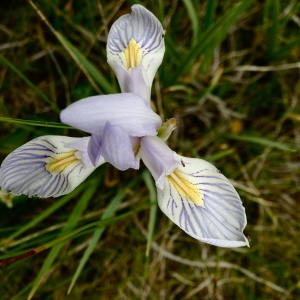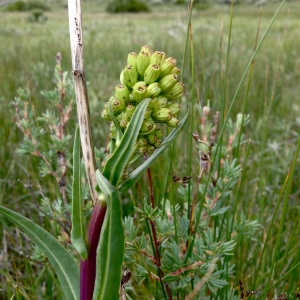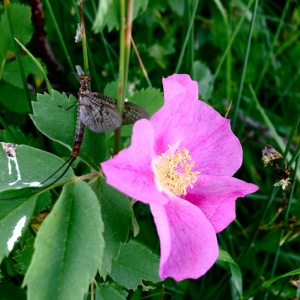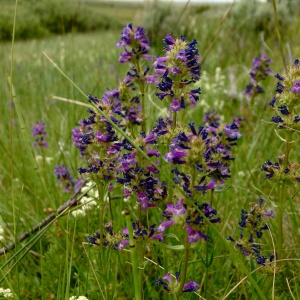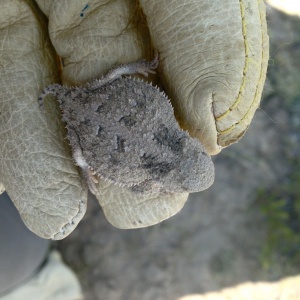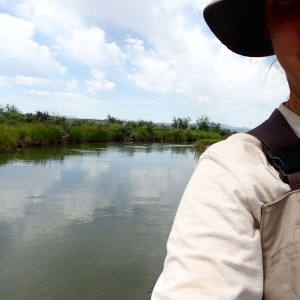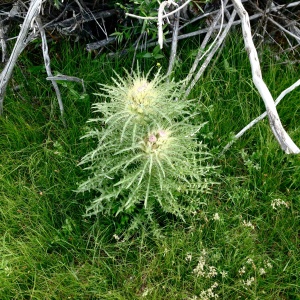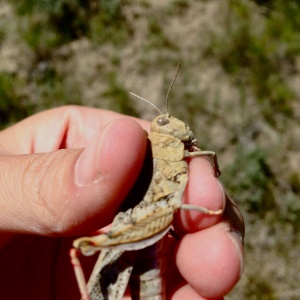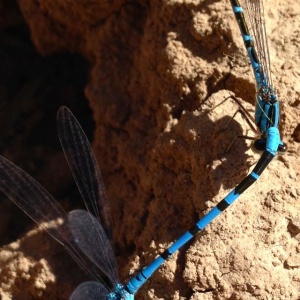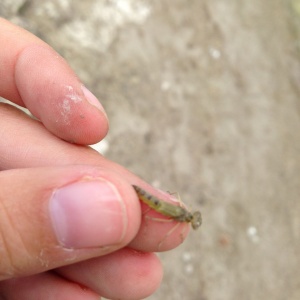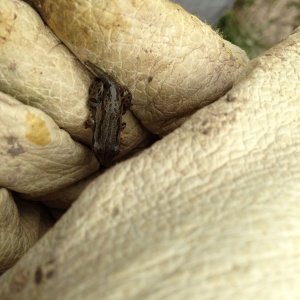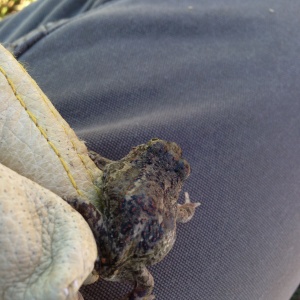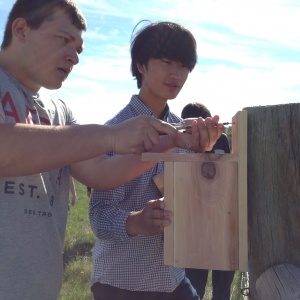At the bottom of a valley along a river were multiple survey points that were next on our priority list. We could see that the area was very green and wet, distinct from the many sites we had previously visited. Determined to reach the Great Valley, we took the only two-track we could find in the direction we wanted to go — down. The descent was an uneasy one, to say the least, with extremely uneven and rocky terrain. I continued to realize new limits of the truck (limits you do not want to go out of your way to try to test). Oh, what a great feeling it was when the truck was finally parallel to the horizon. It was one of those roads that you went down with no intention (or possibility) of climbing back up. “We will find another way out of this valley, for sure,” I reassured Maria. She was hesitant to believe my naive optimism, an unfortunate foreshadowing of what was to come later.
On the brighter side, the valley was everything I would have hoped it to be and more. It was a beautiful wetland, with a slow moving stream and flooded grasslands; an oasis for insects, amphibians, and many interesting and unique flora that we do not usually get to see in the sage.
The winds picked up and I felt a sudden cool down, you know that, “oh, there’s a storm brewin’ feelin'” ? I looked up to find a large mass of dark clouds headed our way. We wrapped up our current survey and headed back to the truck. Come to find out, all of the two tracks that had appeared promising were on the other side of the stream, a winding stream with banks too steep and too wet to drive over. In addition to the stream, there were deep canyons that ran through the landscape like the way a small crack in your windshield soon spreads and expands in unpredictable ways. Without a two-track in site that was reachable, we knew we would have to “off-road” it for a while. The vegetation was thick and made it difficult to see what was ahead or beneath us. The soil was damp, alkaline sand. It was about an hour and a half of driving a few meters, stopping, getting out of the car, walking to see if it was “do-able,” realizing it is not, walking to find a new route around or through it, repeat. When we at last reached a track that headed up and out of the valley, relief and pride energized us both. I couldn’t help but to burst out with laughter. “Two-tracks” was a foreign concept to me when I first arrived; little did I know that the mere sight of one would feel like winning a championship game.
It was hard to believe that we pulled that one off without getting stuck. Gaining new skills every day.




